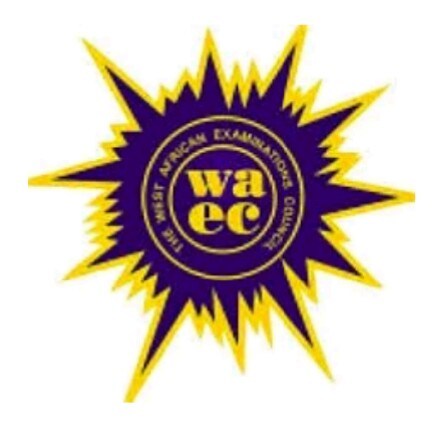If you’re preparing for the Dyeing and Bleaching examination, it is crucial to familiarize yourself with the syllabus provided by the West African Examination Council (WAEC).
This syllabus serves as a roadmap, guiding your study efforts and ensuring that you cover all the necessary topics.
In this blog post, we will explore the aims and objectives of the Dyeing and Bleaching syllabus, the exam format, and the topics you should focus on.
Objectives:
The Dyeing and Bleaching examination aims to assess candidates’ knowledge and practical skills in working with dyes and chemicals on fabrics.
It also evaluates their creative abilities in visual representation and their capacity to produce finished fabric designs for economic value.
Furthermore, the exam emphasizes candidates’ understanding of safety measures involved in dyeing and bleaching processes.
Scheme of Examination:
The Dyeing and Bleaching examination consists of three papers:
Papers 1, 2, and 3. Candidates are required to take all three papers. Papers 1 and 2 are combined into a composite paper, which should be completed within 45 minutes.
Paper 1 includes forty multiple-choice questions from the entire syllabus, totaling 40 marks.
Paper 2 comprises six essay-type questions, out of which candidates must answer any four, with a time limit of 1 hour and 40 minutes and a total of 60 marks.
Paper 3 evaluates candidates’ practical skills in tie-dye, batik, and printing.
It offers three alternatives:
Tie-dye, Batik (Wax or Starch Resist), and Printing.
Candidates must choose and answer the questions corresponding to their chosen alternative.
Each alternative carries 100 marks, and candidates have 30 minutes for preparation, followed by a four-hour test conducted and assessed by a visiting Examiner appointed by WAEC.
Dyeing and Bleaching Syllabus:
The Dyeing and Bleaching syllabus covers a range of important topics. Let’s explore them briefly:
-
Introduction to Tie Dye:
- Definition and meaning of tie-dye.
- Types of tie-dye designs.
- Materials and tools used in tie-dye.
-
Colour Manipulation and Motif Formation:
- Understanding colours and their classifications.
- Formation of motifs for fabric designs.
- Using motifs to create impressions on fabric.
- Creating patterns such as repeat, mirror, half-drop, half-slide, block, etc.
-
Safety and Precautions:
- Essential safety materials during dyeing, such as nose and mouth masks, rubber gloves, aprons, etc.
- Proper storage of chemicals.
- Safe handling of electrical appliances.
- Importance of safety precautions in dyeing and bleaching processes.
-
Preparation of Dye:
- Definition and meaning of dyes.
- Types of dyes (synthetic and natural) and their characteristics.
- Preparation of dye baths.
-
Dyeing Processes:
- Various dyeing procedures.
- Plain dyeing techniques.
- Pattern dyeing techniques like tieing techniques and marbling.
- Finishing processes, including oxidation, washing, starching, ironing, and packaging.
-
Introduction to Batik:
- Meaning and significance of batik.
- Different types of batik designs, such as freehand, splashing, cracking, blocking, etc.
- Materials and tools required for batik.
-
Batik Techniques:
- Wax resist method in batik.
- Preparation of fabric, wax, and other materials.
- Waxing techniques and precautions.
- Oxidation and de-waxing processes.
- Finishing techniques.
-
Starch Resist Method:
- Understanding starch and its role in resist technique.
- Materials and tools for starch resist technique.
- Preparation of paste.
- Safety precautions when using starch.
- Different methods of starch resistance, including stencilling, freehand drawing, screening, and stamping.
- Oxidation and removal of starch.
- Finishing techniques.
-
Fabric Printing:
- Definition and meaning of fabric printing.
- Printing techniques such as relief process (lino), intaglio, silkscreen, etc.
- Tools, materials, and equipment required for printing.
- Motif formation for fabric printing.
- The production process of fabric printing.
- Finishing techniques.
-
Tie-Dye and Printing:
- Introduction to tie-dye printing.
- Techniques used to print on tie-dye, including direct printing, discharge printing, resist printing, transfer printing, etc.
- Materials and tools for tie-dye and printing.
- Finishing techniques.
-
Bleaching:
- Meaning and types of bleaching, such as chlorine bleaching and oxygen bleaching.
- Materials and tools required for bleaching.
- Application of bleach on fabric.
List of Materials, Tools, and Equipment:
The Dyeing and Bleaching examination requires the use of specific materials, tools, and equipment. Here is a list of some essential items: (Refer to the original syllabus for a detailed list.)
Conclusion
To excel in the Dyeing and Bleaching examination, it is crucial to thoroughly study the syllabus provided by WAEC.
The syllabus acts as a guide, ensuring that you cover all the necessary topics and acquire the required knowledge and skills.
Make use of the recommended textbooks alongside the syllabus to enhance your understanding. Remember to prioritize safety measures and practice the practical aspects of tie-dye, batik, and fabric printing.






